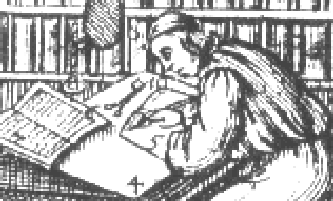 |
Text Encoding Initiative |
The XML Version of the TEI Guidelines<damage> |
| <damage> | contains an area of damage to the text witness. | |||||||||||||||||||||||||||||||||||||||||||||||||||||||||||||||||||||||||||||||||||||||
| Attributes | (In addition to global attributes
and those inherited from edit)
|
|||||||||||||||||||||||||||||||||||||||||||||||||||||||||||||||||||||||||||||||||||||||
| Example |
|
|||||||||||||||||||||||||||||||||||||||||||||||||||||||||||||||||||||||||||||||||||||||
| Note |
Since damage to text witnesses frequently makes them harder to read, the <damage> element will often contain an <unclear> element. If the damaged area is not continuous in the text (e.g. a stain on one side of a page), the <join> element may be used to indicate which <damage> and <unclear> elements are part of the same physical phenomenon. The <damage>, <gap>, <del>, <unclear> and <supplied> elements may be closely allied in use. See section 18.2.4 Use of the Gap, Del, Damage, Unclear and Supplied Tags in Combination for discussion of which element is appropriate for which circumstance. |
|||||||||||||||||||||||||||||||||||||||||||||||||||||||||||||||||||||||||||||||||||||||
| Module | Declared in file teitran2; Additional tag set for Physical Transcription: enabled by TEI.transcr | |||||||||||||||||||||||||||||||||||||||||||||||||||||||||||||||||||||||||||||||||||||||
| Class | edit | |||||||||||||||||||||||||||||||||||||||||||||||||||||||||||||||||||||||||||||||||||||||
| Data Description | May contain character data and phrase-level elements. | |||||||||||||||||||||||||||||||||||||||||||||||||||||||||||||||||||||||||||||||||||||||
| May contain | #PCDATA abbr add addSpan address alt altGrp anchor app bibl biblFull biblStruct c caesura camera caption castList cb certainty cit cl corr damage date dateRange dateStruct del delSpan distinct emph expan fLib figure foreign formula fs fsLib fvLib fw gap geogName gloss handShift hi index interp interpGrp join joinGrp label lang lb link linkGrp list listBibl m measure mentioned milestone move name note num oRef oVar orgName orig pRef pVar pb persName phr placeName ptr q quote ref reg respons restore rs s seg sic soCalled sound space span spanGrp stage supplied table tech term text time timeRange timeStruct timeline title unclear view w witDetail xptr xref | |||||||||||||||||||||||||||||||||||||||||||||||||||||||||||||||||||||||||||||||||||||||
| May occur within | ab abbr activity actor add addName addrLine admin affiliation author authority bibl biblScope birth bloc byline camera caption case castItem catDesc cell channel cl classCode closer colloc constitution corr country creation damage date dateRange def del derivation descrip dictScrap distance distinct distributor docAuthor docDate docEdition docImprint domain edition editor education emph entryFree etym expan extent factuality figDesc firstLang foreName foreign form funder fw gen genName gloss gram gramGrp head headItem headLabel hi hyph imprimatur interaction item itype l label lang langKnown language lbl lem locale measure meeting mentioned mood name nameLink note num number occasion occupation opener orgDivn orgName orgTitle orgType orig orth otherForm p per persName phr placeName pos preparedness principal pron pubPlace publisher purpose q quote rdg re ref reg region rendition residence resp restore role roleDesc roleName rs s salute seg sense settlement sic signed soCalled socecStatus sound speaker sponsor stage street stress subc supplied surname syll symbol tagUsage tech term time timeRange title titlePart tns tr trailer trans u unclear usg view wit witDetail witness writing xr xref | |||||||||||||||||||||||||||||||||||||||||||||||||||||||||||||||||||||||||||||||||||||||
| Declaration |
<!ELEMENT damage %om.RO; %paraContent;>
<!ATTLIST damage
%a.global;
type CDATA #IMPLIED
extent CDATA #IMPLIED
resp IDREF %INHERITED;
hand IDREF %INHERITED;
agent CDATA #IMPLIED
degree CDATA #IMPLIED>
|
|||||||||||||||||||||||||||||||||||||||||||||||||||||||||||||||||||||||||||||||||||||||
| See further | 18.2.3 Damage, Illegibility, and Supplied Text | |||||||||||||||||||||||||||||||||||||||||||||||||||||||||||||||||||||||||||||||||||||||
Up: 35 Elements